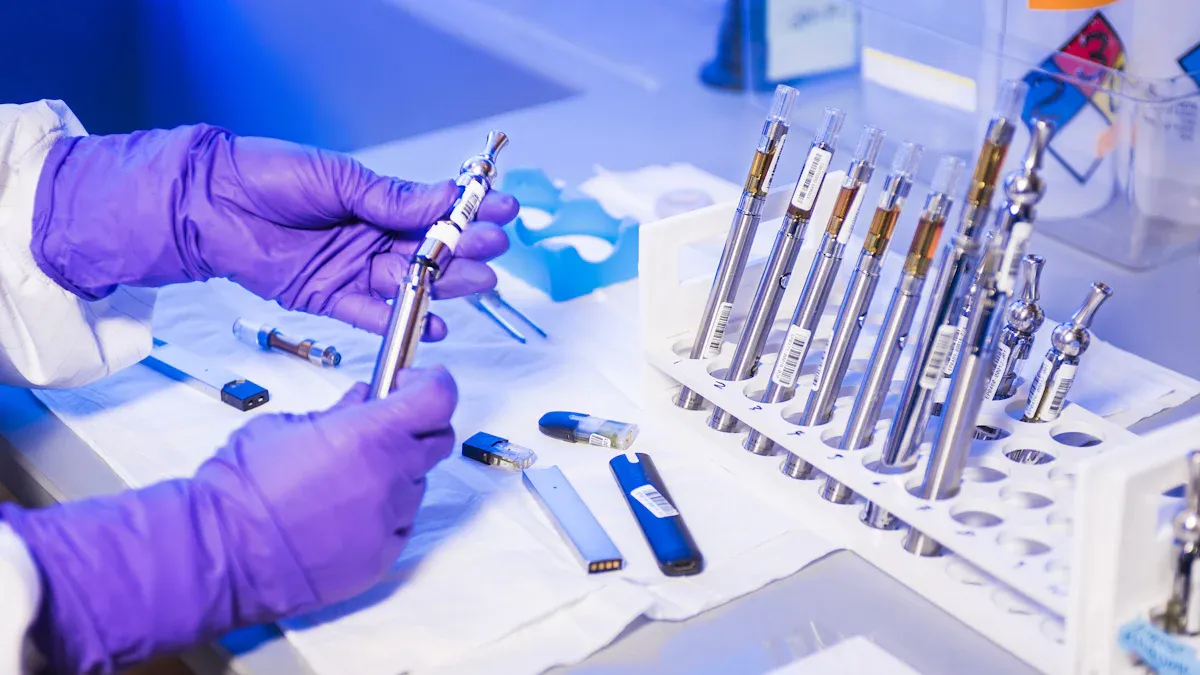
Imagine a world where medical devices last longer, perform better, and improve your health outcomes. TAC coating makes this possible. This advanced technology enhances device durability and reduces complications. You benefit from safer, more efficient treatments. By transforming medical tools, TAC coating paves the way for groundbreaking healthcare advancements.
Key Takeaways
- TAC Coating makes medical devices stronger and safer for use.
- It lowers friction and damage, helping tools and implants work better.
- New studies in TAC Coating may bring better healthcare options soon.
Understanding TAC Coating
Composition and properties
TAC Coating, short for tetrahedral amorphous carbon coating, is a thin, diamond-like layer applied to medical devices. It consists of carbon atoms arranged in a unique structure that combines hardness with flexibility. This composition gives it exceptional strength and resistance to wear. You’ll find that TAC Coating is also chemically inert, meaning it doesn’t react with bodily fluids or tissues. Its smooth surface reduces friction, which makes it ideal for medical applications.
Functionality in medical devices
TAC Coating plays a critical role in enhancing the performance of medical devices. It creates a protective barrier that prevents corrosion and wear, extending the lifespan of tools and implants. For example, when applied to surgical instruments, it ensures precision by maintaining sharp edges. On implants, it minimizes the risk of rejection by improving biocompatibility. You benefit from devices that perform reliably and safely over time.
Key benefits
The advantages of TAC Coating are numerous. Its biocompatibility ensures that your body accepts coated devices without adverse reactions. Durability means these devices last longer, reducing the need for replacements. The coating’s low friction properties also make procedures smoother and less invasive. These benefits translate to better outcomes and improved comfort for you as a patient.
Tip: TAC Coating’s unique properties make it a game-changer in medical technology, offering solutions to common challenges in healthcare.
Applications of TAC Coating in Medical Devices

Enhancing implants (e.g., joint replacements, cardiovascular stents)
TAC Coating plays a vital role in improving implants like joint replacements and cardiovascular stents. When you receive a joint replacement, the coating ensures the implant resists wear and tear, extending its lifespan. It also reduces friction between moving parts, which helps you experience smoother movement and less discomfort. For cardiovascular stents, the coating prevents blood clots by creating a biocompatible surface. This reduces the risk of complications and improves your recovery. By enhancing these implants, TAC Coating ensures they perform reliably and safely in your body.
Improving surgical tools and instruments
Surgical tools coated with TAC Coating offer precision and durability. The coating keeps blades sharp and resistant to corrosion, which helps surgeons perform accurate procedures. For you, this means shorter surgeries and better outcomes. The smooth surface of the coating also reduces friction, making tools easier to handle. Whether it’s a scalpel or a pair of forceps, TAC Coating ensures these instruments maintain their quality over time, improving the overall efficiency of medical procedures.
Role in wearable and monitoring devices
Wearable and monitoring devices benefit greatly from TAC Coating. These devices often come into contact with your skin for extended periods. The coating’s biocompatibility ensures they remain safe and comfortable to wear. It also protects the devices from sweat and other environmental factors, increasing their durability. For example, heart rate monitors and glucose sensors coated with TAC Coating deliver accurate readings while lasting longer. This makes them more reliable for managing your health.
TAC Coating and Medical Technology Trends

Supporting minimally invasive procedures
Minimally invasive procedures rely on precision and efficiency. TAC Coating enhances the tools used in these procedures by reducing friction and improving durability. For example, when surgeons use coated instruments, they experience smoother movements and greater control. This allows them to perform delicate operations with minimal damage to surrounding tissues. You benefit from shorter recovery times and fewer complications. The coating also ensures that these tools maintain their performance over multiple uses, making them reliable for repeated procedures.
Enabling automation and smart devices
Automation and smart devices are transforming healthcare. TAC Coating plays a key role in this evolution by improving the performance of components in robotic surgical systems and wearable health monitors. For instance, robotic arms coated with this material operate with precision and reduced wear, ensuring consistent results. In wearable devices, the coating protects sensors from environmental factors, allowing them to deliver accurate data over time. These advancements make healthcare more efficient and accessible for you, whether you’re undergoing surgery or monitoring your health at home.
Advancing materials for healthcare innovation
TAC Coating drives innovation in medical materials. Its unique properties inspire the development of new devices that are lighter, stronger, and more biocompatible. Researchers are exploring its potential in creating next-generation implants and diagnostic tools. For you, this means access to cutting-edge treatments that improve your quality of life. The coating’s versatility ensures it can adapt to a wide range of applications, paving the way for breakthroughs in medical technology.
Note: TAC Coating continues to shape the future of healthcare by supporting advancements in precision, automation, and material science.
Challenges and Opportunities for TAC Coating
Addressing cost and scalability
One of the biggest challenges with TAC Coating lies in its cost. Producing this advanced material requires specialized equipment and expertise, which can make it expensive. For medical devices to remain affordable, manufacturers must find ways to lower production costs. Scaling up the application of TAC Coating also presents difficulties. Applying the coating uniformly to large batches of devices requires precision and consistency. You might wonder how this can be achieved. Researchers are exploring new methods to streamline production and reduce expenses. These efforts could make TAC Coating more accessible for widespread use in healthcare.
Navigating regulatory and compliance requirements
Medical devices must meet strict regulatory standards before they can be used. TAC Coating adds another layer of complexity to this process. Regulatory bodies require proof that the coating is safe, effective, and reliable. This involves extensive testing and documentation. For manufacturers, navigating these requirements can be time-consuming and costly. However, meeting these standards ensures that you receive safe and high-quality medical devices. Collaboration between researchers, manufacturers, and regulators can simplify this process and speed up the approval of coated devices.
Exploring future research and innovation
The potential for TAC Coating in medical devices is vast. Researchers are constantly looking for new ways to improve its properties and applications. For example, they are studying how to make the coating even more biocompatible or how to apply it to emerging technologies like bioengineered tissues. These innovations could lead to groundbreaking advancements in healthcare. You could benefit from devices that are more effective, durable, and tailored to your needs. Continued investment in research will unlock new possibilities and ensure that TAC Coating remains at the forefront of medical technology.
Note: Overcoming these challenges will require collaboration, innovation, and a commitment to improving healthcare for everyone.
TAC Coating has revolutionized medical devices by enhancing their durability, safety, and performance. It drives innovation, enabling advanced treatments and better patient care. You benefit from improved outcomes and cutting-edge solutions. Continued research and collaboration will unlock its full potential, shaping the future of healthcare and ensuring more effective medical technologies for everyone.
FAQ
What makes TAC Coating unique compared to other coatings?
TAC Coating combines exceptional durability, biocompatibility, and low friction. Its diamond-like structure ensures long-lasting performance, making it ideal for medical devices that require precision and reliability.
Can TAC Coating be applied to all medical devices?
Not all devices are suitable for TAC Coating. Researchers and manufacturers evaluate each device’s material and purpose to determine if the coating will enhance its performance and safety.
How does TAC Coating improve patient outcomes?
TAC Coating reduces complications like infections and device failures. Its biocompatibility ensures safer implants, while its durability minimizes replacements, leading to smoother treatments and faster recoveries for you.
Tip: Always consult your healthcare provider to understand how coated devices can benefit your specific medical needs.


